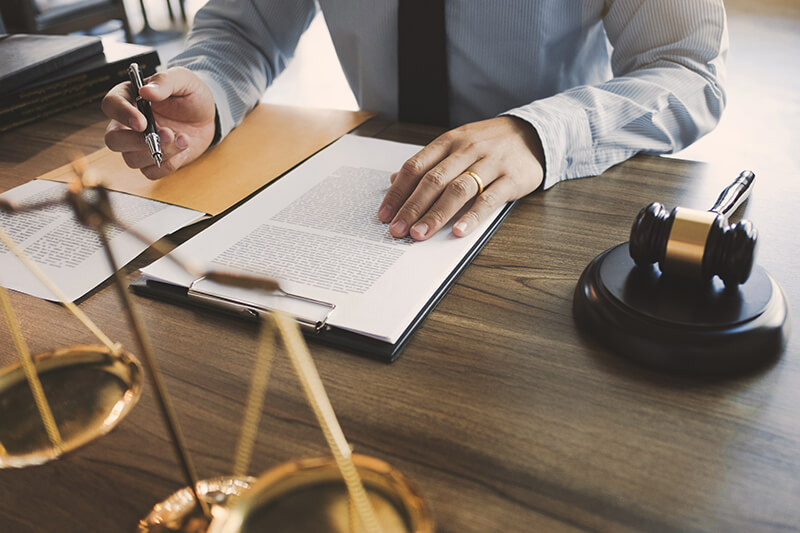Philadelphia Rear End Accident Lawyers
GET A FREE CONSULTATION
PRACTICE AREAS
OUR RESULTS
Nerve Damage
Failure To Diagnose
Laser Eye Surgery
WE HELP REAR END ACCIDENT VICTIMS
Get The Compensation They Deserve
The attorneys at the Thistle Law Firm are experienced in handling rear end auto accident as well as all other types of auto accidents. If you were involved in a rear end accident and want to discuss your legal options, you can reach us at 215-525-6824.
Injuries can have a huge impact on your day-to-day life, and you don’t want to be hung out to dry with overwhelming medical bills after a rear-end accident. Having an experienced rear-end accident lawyer in Philadelphia on your side can help you get the compensation that you deserve.
What Injuries Can Be Caused By A Rear End Accident?
Often, these type of accidents result in injuries that may be minor, but can cause lasting and debilitating pain. If you’ve been rear-ended, you may experience:
- Whiplash
- Muscle strains
- Back injuries
- Airbag injuries
- Broken neck
- Wrist and arm injuries
How Do I Make A Rear-End Accident Case?
If you think you have a case in a rear-end accident, you will have to prove:
- That the fault lies with the other driver
- How the car accident caused your injuries
- What the damages are from the accident
This may involve traffic camera video, either from the streets themselves or from a dash camera (if you or the other driver had one and were recording), eyewitnesses to the accident, a police report, etc. Medical records, support from your treating doctors, and evidence that you were having no recent problems with the injured body part before the accident are helpful in proving that your injury was caused directly by the accident. Your lawyer will assist you in proving what the monetary damages from the accident are.

What are the Laws Concerning Rear-End Accidents in Philadelphia?
In Pennsylvania, more often than not, when one driver hits a stopped car from behind, the rear ending driver is going to be at fault. This is because of a Pennsylvania statute entitled “Driving Vehicle at Safe Speed”, 75 Pa. C.S.A. § 3361. This statute is also known as the “assured clear distance ahead” rule. Under this rule, a driver must not drive at a speed greater than what will let that driver to stop safely behind another car in front of them.
Therefore, if you have a sudden slow down or stop because of traffic, a person who rear ends you will not necessarily get off the hook just because they did not expect you or traffic to stop so suddenly. It was their responsibility to make sure they were traveling at a safe enough speed, and kept a safe enough distance behind you, so that if your car did have to come to a sudden stop, they could also stop without hitting you. Likewise, if the driver rear ending you is injured, depending on the facts of the case, the assured clear distance rule could prevent them from successfully bringing a claim against you.
Examples of Rear End Car Accident Cases
There are situations where the assured clear distance rule will neither support nor defeat a lawsuit when one car hits a stopped one. This was the holding of the Pennsylvania Supreme Court in Lockhart v. List. In this case, a woman sued a garbage truck company when she crashed into one of its trucks that was stopped diagonally across both lanes of travel. She claimed she could not see the truck until the last minute because she just exited the final curve of an “S-curve” roadway before hitting the truck. The garbage truck company argued the woman was at fault for the accident because she violated the assured clear distance rule – i.e. that the truck was visible for her to see, and she was not driving at a speed that allowed her to safely stop without crashing into the truck.
However, given the fact that there was no clear evidence that the woman was speeding and there was a dispute of whether she could see the stopped garbage truck, the Court held the emergency doctrine should also apply to the case. Under this doctrine, a person is not held to the “usual degree of care” or required to exercise his or her “best judgment” when confronted with a sudden and unexpected emergency created by someone other than the person claiming protection under the doctrine. Usually, this doctrine applies when a moving object suddenly jumps out in front of a driver, but the Court held it should apply to the Lockhart case as well.
